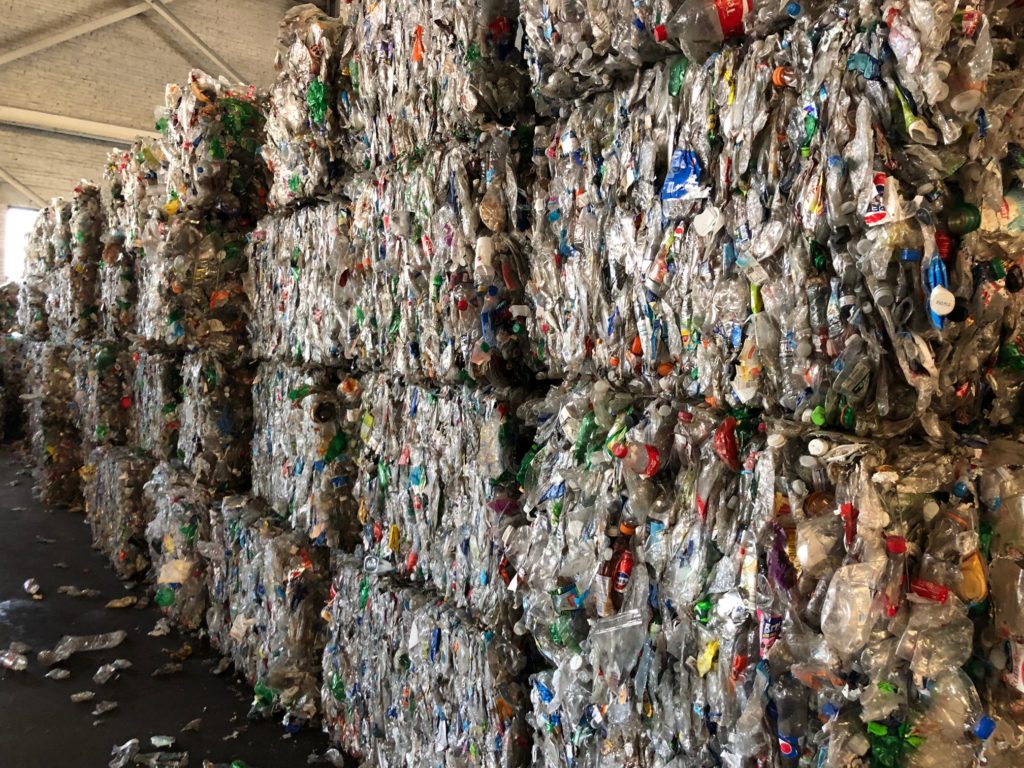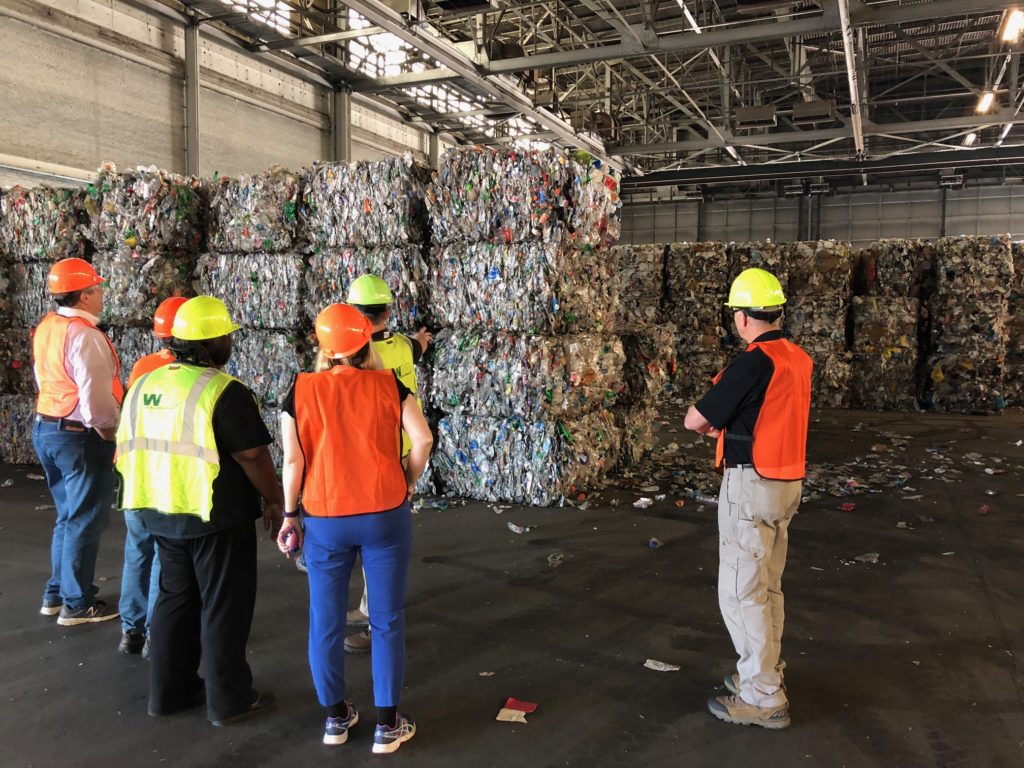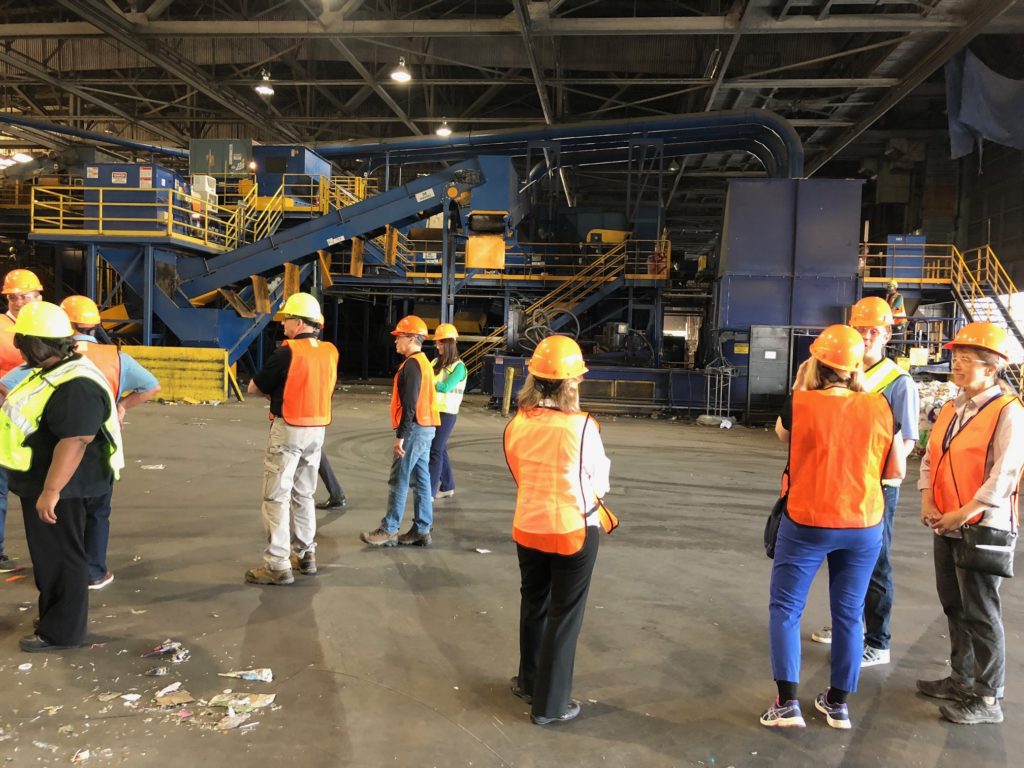Inside A Single-Stream Recycling Center: Where Does It All Go From Here?
- Go Green Go
-
May 27
- Share post

For decades, China has been importing our recyclable materials, and recycling them for use in a myriad of products. As of 2017 they were accepting 50% of the world’s supply of recyclable paper products, and 30% of just about everything else, like plastic and aluminum. Those numbers are hard to comprehend. That’s all about to change as China has announced it will stop accepting recyclable materials from most countries including the United States.
The main reason Chinese officials gave for this move is contamination. The recyclables the US sends are just not clean enough, and contain all sorts of harmful pollutants they do not want harming their land and population. China wants us to clean up our act and stop sending them our junk. Therefore, China will be turning to their own solid waste and virgin material markets. Some say they do not have enough supply to keep up. But that remains to be seen.
In the meantime, recycling centers in the US are scrambling to deal with the sudden change, and many markets are collapsing as prices for recyclables take a nose-dive. Because of this, some industries will experience a boon, while others are going bust. Are job losses next? Quite possibly.

This market shift has created a glut in supply. In many cases, waste haulers are either paying people to take the excess material, or are just landfilling it. The processing of recyclable materials via curbside pickup through a single-stream facility is a pricey venture. If this is the new norm, will haulers stop offering curbside recycling all together? Will they put stiffer requirements on what can be collected? Or will they raise prices?
I was lucky enough recently to be given a tour of the Waste Management Green Star Recycling Center in Akron, Ohio. This 200,000 square foot facility processes recyclable materials from most counties in western Ohio, including my own town. It was an eye-opening, impressive, yet disconcerting experience to say the least.

Tons and tons of “recyclables” are trucked in daily, off loaded, and scooped in to a huge hopper to begin the separation process. Large, loud conveyers take the material up to a team of 6 workers who stand over the whizzing belt with the soul job of removing plastic bags before they have a chance to get further into the system and clog the machines, which happens regularly. Even still, many bags do make it through and end up contaminating the separated bales of paper.
Contamination from plastic bags routinely shuts down these machines, costing time, money, and worker safety.
Plain and simple: plastic bags are the devil. Not just to the environment, but also to single-stream recycling machines, and the industry they support. These machines are complicated engineering marvels that can process tons of material every day. But contamination from plastic bags routinely shuts down these machines, costing time, money, and worker safety.

As the material makes its way through a series of conveyors, additional workers pull out non-recyclables and “wish-cyclables.” Non-recyclables are prevalent. In fact, our guide Vince told us 35% of everything they receive is trash, or is in a condition that cannot be processed. For instance, a sealed plastic bag full of plastic bottles gets pulled off the line and trashed, because it is in a bag. The bag can’t go through the machine, so it has to get pitched. So down the shoot it goes into the back of a twenty-ton semitrailer for its final ride to the landfill, where it will live for the next several millennia.
35% of everything they receive is trash, or is in a condition that cannot be processed.
Wish-cyclables are items people think are recyclable, because they are made of plastic, metal or glass, but the facility has no way to process them, like garden hoses, windows, plastic toys, or auto parts. All these items were prevalent on our tour including all types of sports balls, electronics, styrofoam, yard waste, and tools. It all gets trashed.
The automated processing continues as paper falls off into waiting piles below, puffs of air separate plastic bottles, zaps of electricity eject aluminum, and a magnet grabs metal food cans. At the end of the line, the separated items are put into balers and compressed into 4 foot cubes. The cubes are inspected, labeled and stacked, where they wait to get shipped off to be reused, remade and reborn – or given the current market conditions, maybe just dumped in a landfill.
Despite the amazing ability of the sorting machine and the diligent efforts of the workers, contamination still occurs. Industry wide, there is approximately 5-10% contamination in the final processed bales. At the Akron Green Star location, they claim a 3-5% contamination rate.

Given the volume and scale of single-stream recycling, and the magnitude of China’s decision, we are now forced to confront issues about what waste we create, how to produce less, and why we create it in the first place. In reality, a cultural shift must occur, lead by education on how to be smarter about what we purchase, consume and throw away. We have reached a tipping point of sorts where the system and markets, as they currently exist in the US, cannot handle the continued onslaught of these materials, unless we want to live in our own waste. A concerted, sustained effort is required at all levels of society to evaluate and improve our wasteful habits.
Let’s be honest with ourselves. We can all do better.
Some more tips, reminders and stats about recycling (updated 11/2018):
- NEVER put plastic bags in your curbside recycling. Put the bags aside and take them to plastic bag recycler. Most grocery stores have bins.
- Most curbside recycling only accepts paper, cardboard, plastic bottles, plastic jugs, glass jars, aluminum cans, and metal food cans. See your hauler’s website for a specific list.
- Things like auto parts and electronics are recyclable in most cases, but must be taken to a proper facility.
- Toys, balls, garden hoses, wire and tools are generally not recyclable, unless you can find a specific recycler who will process them for you.
- Use reusables like grocery bags, water bottles, coffee cups, straws.
- Say no to styrofoam, coffee pods and plastic drinking straws. Check out LonelyWhale.org #StopSucking for more info.
- If you forget your bags, use paper. If your store doesn’t offer paper, talk to the manager.
- Yard waste is not recyclable, but it is compostable. Find a compost facility or community garden in your area, or start your own backyard pile. Your garden will thank you!
- Contact the manufacturers and tell them to be smarter and more conscientious about how they package their products
- 69% of plastic water bottles do not get recycled
- Americans use 500,000,000 single-use plastic straws every day. Most curbside recyclers do not accept them.
- Caps and lids are no longer accepted by most curbside recycling haulers.
- Visit TerraCycle.com to learn about how to recycle other things like candy wrappers, contact lenses, pens and other forms of waste.

Written by: Eric Hancsak
Founder of GoGreenGo.org
Eric owns a graphic design company in historic Hudson, OH, where he lives with his wife and son. He is a Climate Reality Leader trained by Al Gore and The Climate Reality Project, and was appointed by Hudson City Council to a seat on the Hudson Environmental Awareness Committee.
